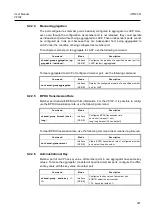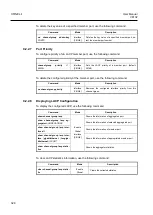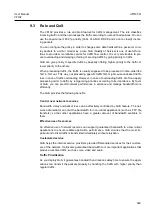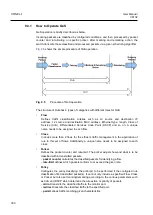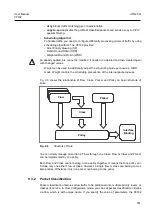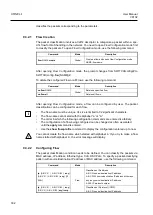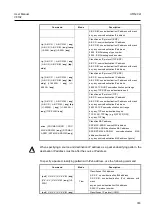
User Manual
UMN:CLI
V8102
339
no policy all
Deletes all policies.
After opening
Policy Configuration
mode, a policy can be configured by user. The rule
priority and rule action(s) can be configured for each policy.
•
The policy name must be unique. Its size is limited to 32 significant characters.
•
The policy name cannot start with the alphabet
“a” or “A”.
•
The order in which the following configuration commands are entered is arbitrary.
•
The configuration of a policy being configured can be changed as often as wanted
until the
apply
command is entered.
•
Use the
show policy-profile
command to display the configuration entered up to
now.
If you already create the policy, you need to include specified flow or class and policer to
specify the rule action for the packets matching configured classifying patterns on flow or
class and policer.
To include specific flow or class and policer in policy, use the following command.
Command
Mode
Description
include-flow
NAME
Policy
Includes specified flow in policy.
NAME:flow name
include-class
NAME
Includes specified class in policy.
NAME:class name
include-policer
NAME
Includes specified policer in policy.
NAME:policer name
One policy is not able to include both flow and class at the same time. Either flow or class
can belong to one policy.
Only one policer can belong to one policy.
To remove flow or class, policer from the policy, use the following command.
Command
Mode
Description
no include-flow
Policy
Removes the flow from policy.
no include-class
Removes the class from policy.
no include-policer
Removes the policer from policy.
9.3.4.2
Metering
Meters measure the temporal state of a flow or a set of flows against a traffic profile. In
this event, a meter might be used to trigger real-time traffic conditioning actions (e.g.
marking, policing, or shaping).
Typical parameters of a traffic profile are:
•
Committed Information Rate (CIR)
i
!
!



